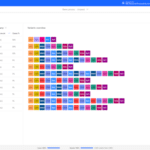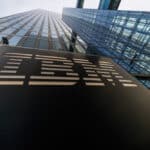Microsoft introduces process mining to help drive business insights

Among today's announcements coming out of Microsoft Inspire is news that Power Automate Process Mining will become generally available to all channels on August 1st.
Using AI it will enable organizations to easily understand what is happening across their business, maximize process insights, use out-of-box recommendations to reduce the complexity of processes, transform operations, and drive continuous process improvement with automation and lowcode apps.
Businesses struggle to make decisions due to 'analysis paralysis'

In difficult economic times businesses need to make decisions quickly and data is a key part of enabling those choices.
But research from analytics cloud platform Alteryx shows enterprises are struggling to make timely, insight-driven decisions because of 'analysis paralysis' caused by issues around ownership of and access to data.
More than half of enterprises overwhelmed by data

Today's typical large organization is holding 35 petabytes of data across its systems and this is expected to double by 2025. But 75 percent of IT leaders are concerned that their current infrastructure won't be able to scale to meet this demand.
A new report, from infrastructure specialist Hitachi Vantara, shows that while technologies like generative AI are spurring a goldrush to greater insights, automation, and predictability, they are simultaneously putting pressure on the already-strained infrastructure and hybrid cloud environments on which they run.
Economic uncertainty drives digital transformation efforts

Enterprises plan to invest $33 million in digital transformation projects in the next 12 months, according to a survey of 600 senior IT decision makers.
But the research, from database platform Couchbase, also finds a shift in priorities. 78 percent of IT decision makers confirm their main priorities for transformation have changed in the last three years, and 54 percent say their digital transformation focus has become more reactive to market changes and customer preferences, in order to help the wider organization stay agile.
Are collaboration tools opening up a backdoor into enterprises? [Q&A]

The pandemic changed the way we work, with more people working from home and fewer in the office. That meant we became much more reliant on tools like Slack and Teams in order to keep in touch with colleagues.
Even though some people are now going back to the office, reliance on these collaboration tools remains high. The dark side of this trend is that cybercriminals have noticed and are increasingly using them as vectors for phishing attacks.
IBM launches generative AI platform for enterprises
Dealing with the data authorization blindspot [Q&A]

User authorization for access to data is complicated. Knowing who has access to what information is often difficult because of complex role hierarchies, different authorization models used for different technologies, and the variety of data that may be accessible across technologies and clouds.
Ben Herzberg, chief scientist at data security platform Satori, believes there's often a blindspot around authorization, but that the issue doesn't have to be as complex as it can seem. We talked to him to learn more.
Enterprise search: Myth vs reality

When you think of a search engine, you probably associate to Google or Bing. Those are great for navigating the public web. But they are not going to let you locate an email exchange from nine years ago or find a footnote reference in millions of office files. For that, you need a different product category, enterprise search.
With enterprise search, one or more concurrent search threads can instantly search terabytes of organizational data, including over 25 different full-text and metadata search options and the display of retrieved items with highlighted hits. Sounds cut-and-dried, does it not? But scratch a bit deeper, and you’ll find some myths about enterprise search that are quite at odds with its reality. While some myths are relatively inconsequential, others can have effects that you need to be aware of in terms of the reach of enterprise search.
Disrupting the phishing killchain with new defenses [Q&A]

Recent reports have shown that email is still the channel where enterprises are most vulnerable to attacks, in particular phishing.
But adding new browser-based layers of security protection can disrupt such killchains, for example by preventing phishing victims from accessing or engaging with spoofed sites. We spoke to Red Access co-founder and CTO Tal Dery to find out more.
Real-time web data -- a new source of competitive intelligence [Q&A]

Gathering real-time public web data for business intelligence is a new competitive asset for some companies, but little information is available about the use cases for such data.
We spoke to Aleksandras Šulženko, product owner at Oxylabs.io, to learn more about how web data can be a valuable resource for enterprises.
Preparing the workforce for AI [Q&A]

Artificial intelligence isn't all that new, but recently the availability of tools like ChatGPT has catapulted it into the public consciousness. When it comes to introducing AI in the workplace though it's inevitable that some people will perceive it as a threat.
We talked to Khadim Batti, Whatfix CEO and co-founder, to discover how enterprise leaders can prepare their workforces for AI and overcome the challenges that it presents.
We're all techies now say enterprises

Three years on from the pandemic forcing businesses to digitize in a hurry, more and more enterprises now identify as 'tech companies.'
Research from product experience platform Pendo finds nearly 49 percent of 'traditional' enterprises in the UK now consider themselves as technology companies, and are adopting more 'tech-like' strategies, roles and tools to drive innovation and growth.
Three of the world's most expensive phishing attacks... and how they could have been prevented

A number of high-profile cyber-attacks in recent years have thrust cybersecurity back into the spotlight. In light of the HAFNIUM hack, cybersecurity has become a major focus for many businesses. Although the hack itself was not the result of human error, it was a wake-up call for organizations to make sure they were fully protected.
The UK's Department for DCMS’ Cyber Security Breaches Survey 2021 revealed that phishing is still the most common cause of cybersecurity breaches, accounting for 83 percent of all successful attacks.
Enterprise SIEMs miss 76 percent of attack techniques

Security information and event management systems (SIEMs) are missing detections for 76 percent of MITRE ATT&CK techniques that adversaries use to breach their environments, according to a new report.
Produced by CardinalOps, the study analyzes real-world data from production SIEMs -- including Splunk, Microsoft Sentinel, IBM QRadar, and Sumo Logic -- covering more than 4,000 detection rules, nearly one million log sources, and hundreds of unique log source types.
Threat landscape is getting worse say CISOs

A new study of over 200 CISOs and senior security leaders at organizations with over 5,000 employees shows that 93 percent have suffered at least one cyberattack in the last year and all of them think the security landscape is worsening.
The research from Censys also shows that 53 percent identify the need to secure their organization's entire attack surface as their top priority.
Recent Headlines
Most Commented Stories
BetaNews, your source for breaking tech news, reviews, and in-depth reporting since 1998.
© 1998-2025 BetaNews, Inc. All Rights Reserved. About Us - Privacy Policy - Cookie Policy - Sitemap.
